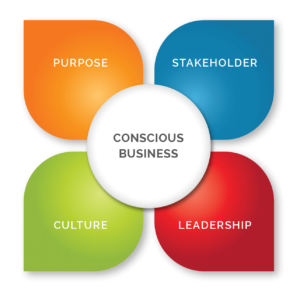Leading with Values
For a company to deliver an outstanding customer experience, it must first embrace the values of the people it serves.

Why is it that so few brands around the world excel at customer experience management?
According to Forrester Research’s annual benchmark study of customer experience quality, just 1% of large global brands merit a score of “excellent”. Mediocrity appears to be the prevailing standard.
To understand why so few brands make the grade, look no further than Uber, a company whose core values are spelled with dollar signs. The unrepentant leadership of CEO Travis Kalanick finally forced Uber’s investors to get rid of him. Even though he had created a monstrously successful $70-billion enterprise in just eight years, and was the darling of Silicon Valley, his company’s rogue behaviour had drawn enough critical scrutiny to jeopardize its valuation.
Whether it’s Uber, Wells Fargo, Volkswagen, Turing Pharmaceuticals or United Airlines, companies that put profit ahead of people invariably become the target of public shaming channelled through social media. In the past, companies could squirm out of atonement through crisis management. Not anymore. Social media has been weaponized, used to crucify corporate bandits, expose chicanery, ridicule the brand (think Pepsi), and organize product boycotts. Companies which worship at the altar of shareholder value – who believe in wealth creation at any cost, who think business is a zero-sum game, who will do just about anything to win market domination – are now being branded social pariahs. Look at Uber – the social fury began with a single blog post by an employee complaining of the toxic workplace culture.

Unlike Uber, most companies are careful not to cross ethical lines, knowing the legal and reputational risks. But what they have a hard time giving up – and what explains their inability to deliver a high-quality customer experience – is their shareholder-first mentality. Company executives are incentivized to act primarily as “agents” of shareholders, a role they assumed in the 1980s when neoliberalism took over as boardroom dogma (the belief that corporate self-interest trumps the public good). From that time onward the interests of other stakeholders became subordinate to the pursuit of short-term profits. That fixation with the bottom line is the reason customer satisfaction has flatlined amongst major brands. As far as the top brass is concerned, being OK is good enough. Anything more is a misuse of shareholder dollars.
Recently a new ideology has emerged called “conscious capitalism” whose credo is to “do no harm”. An early supporter of that movement has been Whole Foods CEO John Mackie who recently sold his business to Amazon precisely because he was fed up with greedy investors looking over his shoulder.
Companies like Whole Foods, Etsy, Danone, USAA, Starbucks, REI, Trader Joe’s, The Container Store, Nordstrom, and other socially-progressive businesses believe that they can only prosper in the long term by satisfying the interests of all stakeholders – employees, suppliers, partners, and most importantly customers. The only purpose of a business, they believe, is to create value. So it is no surprise that these brands are prominent leaders in customer experience management. They recognize the connection between the values of the company and the value it creates, not just for customers, but for the world at large.
One of the fundamental precepts of “conscious capitalism” is that every business should operate in accordance with a higher purpose: a reason for being that goes beyond profit-making. As strategy guru Michael Porter argues, “The purpose of a corporation must be redefined as creating shared value, not just profit per se.”
By declaring how a brand serves the public interest, people can more easily identify with it, seeing a reflection of themselves in what it stands for. And that purpose does not need to be a grandiose statement about making the world a better place. It can be a promise to serve a specific community. Take Etsy, for example, which empowers artisans to start and grow businesses through e-commerce; or the Canadian shoemaker Oliberté which supports workers’ rights in sub-Saharan Africa; or Patagonia, a brand now synonymous with environmental sustainability, which started out making tools for climbers; or Lee Valley Tools whose dedication to woodworking hobbyists is legendary.
Shared values are what separates citizen brands from outlaw brands
In crafting a brand purpose, the strengths and passions of a company must intersect with the values and interests of customers to form an emotional bridge. A brand purpose gives meaning to the business beyond earnings per share. It states a universal truth and converts it into a movement. It inspires people; motivates them; helps them find meaning in their work. Most importantly, it is an implicit promise “to do good” through social and community progress.
To be credible, however, a brand purpose must be connected to a belief system: an intrinsic set of values which guide the moral conduct of the company. Most companies have a declared set of values, usually as part of a mission statement. Almost always, those values are a contrived sentiment, hollow in intent and rarely adhered to in practice. But to be credible those values must be heartfelt – and inviolable. Where Uber went wrong is with its mercenary values: “Always be hustlin’”, “Let Builders Build”, “Meritocracy and Toe-Stepping”, “Principled Confrontation”, and more, adding up to an ethos of “anything goes”.
Without a humanistic set of core values, a company can never reach the summit of customer experience. Shared values are what separates citizen brands from outlaw brands. A citizen brand is never guilty of moral ambiguity. It respects the spirit of the law; shows empathy and compassion; and conducts itself responsibly. Above all, it puts the needs of customers first. It knows that to have a “clear and profound” impact on loyalty, it must make customers feel “appreciated, confident and respected”, as Forrester has proven in its quality indexing model. The difference between a “good” and “excellent” score, according to that model, is how a customer feels about a brand – whether they believe the brand puts their interests ahead of their own.
The unscrupulous Kalanick won’t be the last CEO dethroned for ethical misconduct – after all, the corporate ideology which gave him license to flout social mores, just to make shareholders happy, is still very much alive in the boardrooms of most large corporations. But eventually, those corporations will realize they must respect and embrace the values of the customers they serve or face the wrath of society. People are not always drawn to brands they see as good – but they certainly avoid the brands they know are bad.